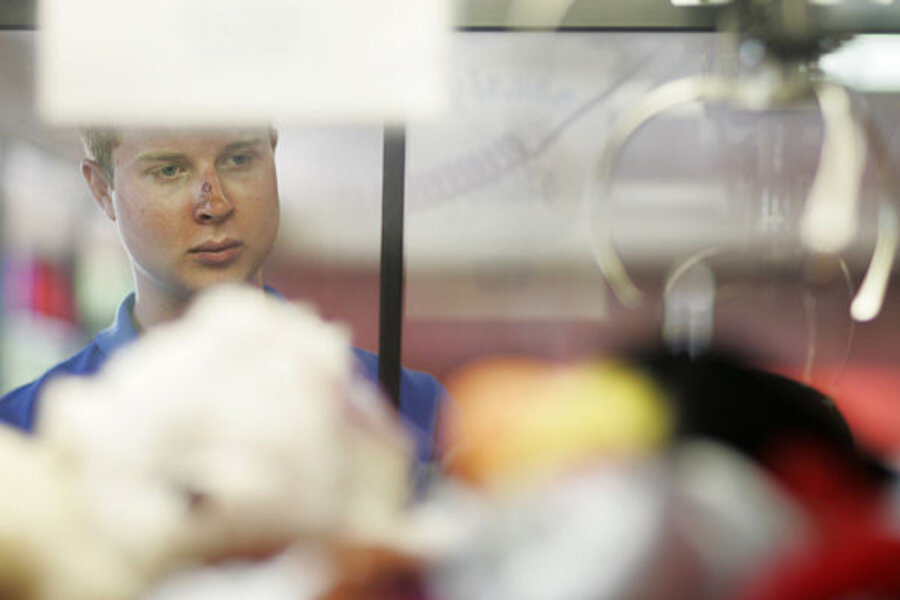When parental money lessons backfire (or, How my daughter won a toy)
Loading...
As I’ve mentioned before, we give our children a small allowance each week. Our daughter, who is only two, puts all of her money into a single-slot piggy bank and is allowed to fully spend it as she chooses. Our son gets more money for his allowance (for now), but has a Money Savvy Pig, where he splits his allowance into four equal parts: money to freely spend, money to save for an item he wants, money for an annual charitable gift, and money for investing for the long term.
The idea here, though, is that each of them has a few quarters to spend each week on whatever they would like. Most of the time, they spend it on reasonable kid things – they both have a strong affection for M&Ms, for example, and often buy M&Ms with their quarters.
This week, however, was different. We were dining at a restaurant that had one of those carnival-esque “claw” machines near the exit, where you use a stick to maneuver a claw around, then hit a button to have the claw drop into a pit of stuffed animals or other toys. Almost always, the claw is unable to pick any of the items up, so you simply lose the money you put in there.
We’ve warned our kids about these machines in the past. “If you put your money in there, you’ll just lose it and not get anything for it.” “Those machines are rip-offs.”
However, we are also committed to letting our children make their own choices about their free-spending money. Thus, as we were leaving with our children, they asked if they could use their spending money in the claw machine. After a quick warning about the nature of the machine, we allowed them to, assuming it would teach them a quick, simple lesson about disappointment and how things like this actually work.
Of course, my two year old daughter won a stuffed animal on her first try.
Of course, my four year old son won a stuffed animal on his second try.
Obviously, the lesson learned from this situation is the opposite of what we hoped they would take from it. My son, in fact, has already told us that this is now his favorite restaurant and he can’t wait to go back to get another stuffed animal, implying (of course) that it’s trivial to get a stuffed animal from such a machine.
Where do we go from here? My wife and I talked about it and came up with the following conclusions that we feel are in line with the money lessons we want to teach our kids.
If they wish to try again with their “free spending” money, we won’t stop them. How you choose to spend money – and what you get out of it – is a constant lesson in itself. Putting restrictions on the portion of their allowance that they’re allowed to spend freely (at least at this point) defeats the learning (even if sometimes the learning isn’t perfect).
We’ll still advise them of potential poor spending choices. Of course, just because they’re allowed to freely spend doesn’t mean we don’t offer suggestions to them about what’s a good spending choice and what’s a bad spending choice. We try to avoid drawing conclusions, but we do try to provide information. We focus on saying things like, “If you put your money in this machine and it doesn’t win a toy, that money is simply gone – you’ll get nothing for it.”
We won’t “avoid” such machines in the future. One topic was whether or not we should actively strive to avoid “claw” machines for a while until they forget that they won. Of course, doing so simply delays the inevitable lesson that they’ll have to learn from such machines, so we decided not to avoid such machines.
We will never recompensate them for their lost money in such machines. When they try again and inevitably lose, we will allow them to feel the sting of disappointment and not undo that sting by reimbursing their money, as we’ve observed other parents do in the past. They have the freedom to spend their money as they choose, and they also have the freedom to lose it and to grow from the lessons they learn.
Still, I have to say I was honestly amazed when my two year old daughter moved the claw around jerkily for a few seconds, smashed the button, and was rewarded with a cute little stuffed animal. I honestly believe I could have played the machine for an hour and not won a single thing.
Add/view comments on this post.
----------------------------
The Christian Science Monitor has assembled a diverse group of the best economy-related bloggers out there. Our guest bloggers are not employed or directed by the Monitor and the views expressed are the bloggers' own, as is responsibility for the content of their blogs. To contact us about a blogger, click here. To add or view a comment on a guest blog, please go to the blogger's own site by clicking on the link above.





